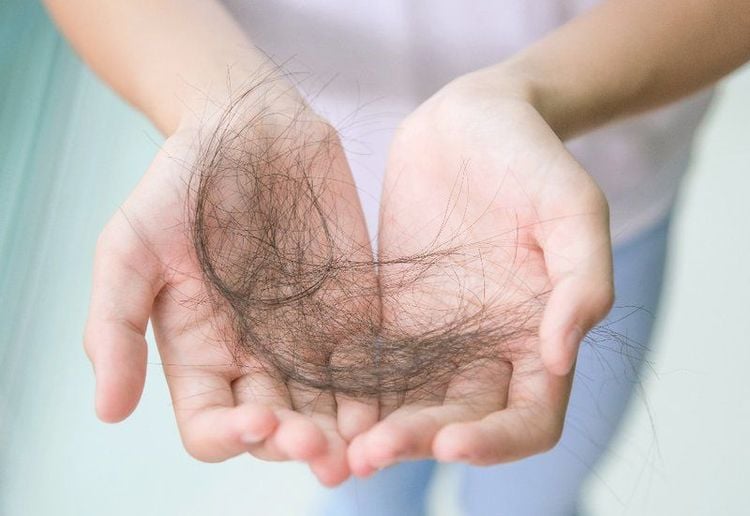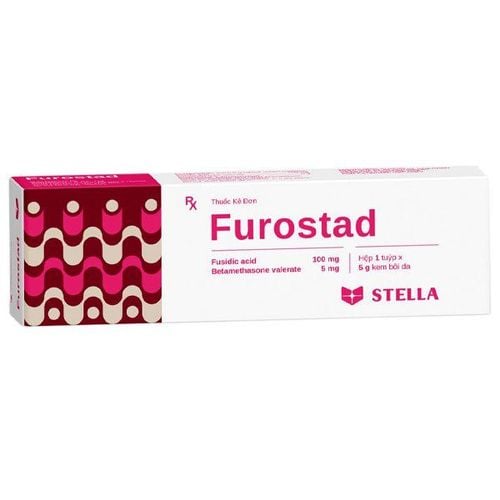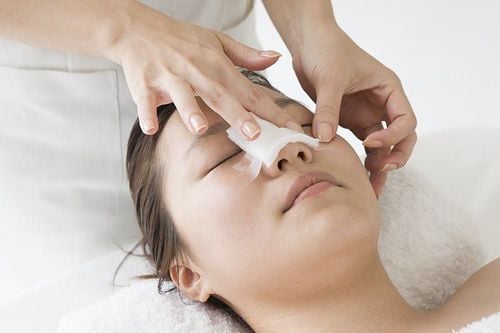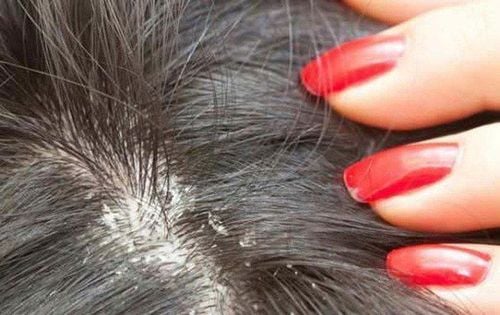This is an automatically translated article.
Pustules on the hairline are a sign of folliculitis. This is an inflammatory disorder affecting the hair follicles in the scalp, which is characterized by small and itchy hairline breakouts. Although not life-threatening, folliculitis on the scalp can be itchy, painful, and uncomfortable.1. What is Oily Folliculitis?
Scalp folliculitis is a condition in which pimples appear at the hairline, causing an inflammatory or irritating reaction. Common triggers for inflammation are bacteria and fungi as well as other conditions, such as ingrown hairs, and poor hygiene.Symptoms of scalp folliculitis usually start with pustules or white hair roots. Inflammation occurs along the hairline in front of the forehead. After that, these acne spots will gradually grow large, the inflammation becomes more and more severe. If left untreated, scalp folliculitis can spread to the hair follicles in the center or back of the head.
In addition, other symptoms of scalp folliculitis include:
Formation of clusters of pus-filled or scaly sores on the scalp; The appearance of scaly acne, white hair roots or white acne hair roots; Brown or yellow scaly sores; The scalp layer is inflamed; Skin itching and burning sensation; There may be a slight fever.
2. What are the causes of scalp folliculitis?
Causes of scalp folliculitis include:Bacterial infections; Yeast infections ; Exposure to non-chlorinated water in a hot tub; Ingrown hairs; Long-term use of topical antibiotics; Weakened immune system. In addition, when the following risk factors are present, a person may have an increased risk of scalp folliculitis than others:
Frequent shaving of the head; Wear a hood or helmet; Has a habit of scratching or rubbing the scalp; Hair pulling; Have thick or curly hair; Being male; Using antibiotics for a long time; Have acne or dermatitis;

Sử dụng thuốc kháng sinh tại chỗ lâu dài có thể gây viêm nang lông da đầu
3. How to treat scalp folliculitis?
There are several treatment options for scalp folliculitis. The following home remedies may be helpful when treating mild cases:Avoid cutting your hair and shaving your head for several days of illness. If necessary, a clean and new razor should be used; Warm compresses can be applied to soothe inflamed, swollen and pus-filled skin; Apply antibiotic ointment to large nodules and open sores; Use a mild antihistamine or topical steroid cream to reduce inflammation; Wash your hair with an anti-dandruff shampoo. Patients should see a dermatologist if severe or persistent scalp folliculitis does not improve with home treatments. At this point, the doctor can determine the underlying cause and prescribe effective treatment, which may include:
Oral or topical antibiotics; A prescription potent topical steroid; Topical antifungal ointment; Anti-bacterial shampoo; Light therapy to kill bacteria and fungi on the scalp; Laser hair removal to destroy infected hair follicles; Surgical drainage of large pus-filled lesions.
4. Possible complications of scalp folliculitis
Scalp folliculitis is not a medical emergency, and most people have it mildly and can be treated at home. However, if a person does not treat scalp folliculitis actively, delay can lead to:Formation of a boil or large, pus-filled nodule under the skin; Appearance of dark patches of skin; Leaving scars after skin lesions heal; Permanent hair loss; Chronic or recurrent skin infections; Cellulitis or skin infection.

Người bệnh viêm nang lông có thể bị rụng tóc vĩnh viễn
5. How to prevent scalp folliculitis
The following strategies can help prevent scalp folliculitis:Daily body hygiene, frequent shampooing; Rinse off styling products immediately after use; Limit wearing unhygienic hoods or helmets for a long time; Avoid shaving your head with a dull or unhygienic razor; Do not bathe with improperly treated water. In addition, to help reduce the risk of folliculitis on the scalp in particular and other areas of the body in general, patients should treat their underlying conditions, namely:
People with this condition Diseases affecting the immune system, such as rheumatoid arthritis, HIV or diabetes, should consult a doctor for treatment to prevent infection or improve resistance. People with a history of long-term topical antibiotic use should consider other alternative treatment options. Some patients often worry if folliculitis is contagious. In fact, scalp folliculitis, if caused by atopic factors, is usually not contagious. However, infectious agents, such as bacteria and fungi, can make scalp folliculitis more contagious if risk factors are involved such as sharing razors, towels, hairbrushes, and other products. other personal hygiene products.
In summary, scalp folliculitis with the common manifestation of pustular hair roots can be uncomfortable and painful for sufferers. Fortunately, some simple over-the-counter home treatments can help relieve symptoms. However, if a person has an underlying health condition that weakens the immune system, the risk of the disease spreading or becoming more severe and difficult to control. Accordingly, it is necessary to visit a dermatologist to find the cause and actively control the folliculitis in the scalp.
Please dial HOTLINE for more information or register for an appointment HERE. Download MyVinmec app to make appointments faster and to manage your bookings easily.
Reference sources: medicalnewstoday.com, skinkraft.com/blogs












